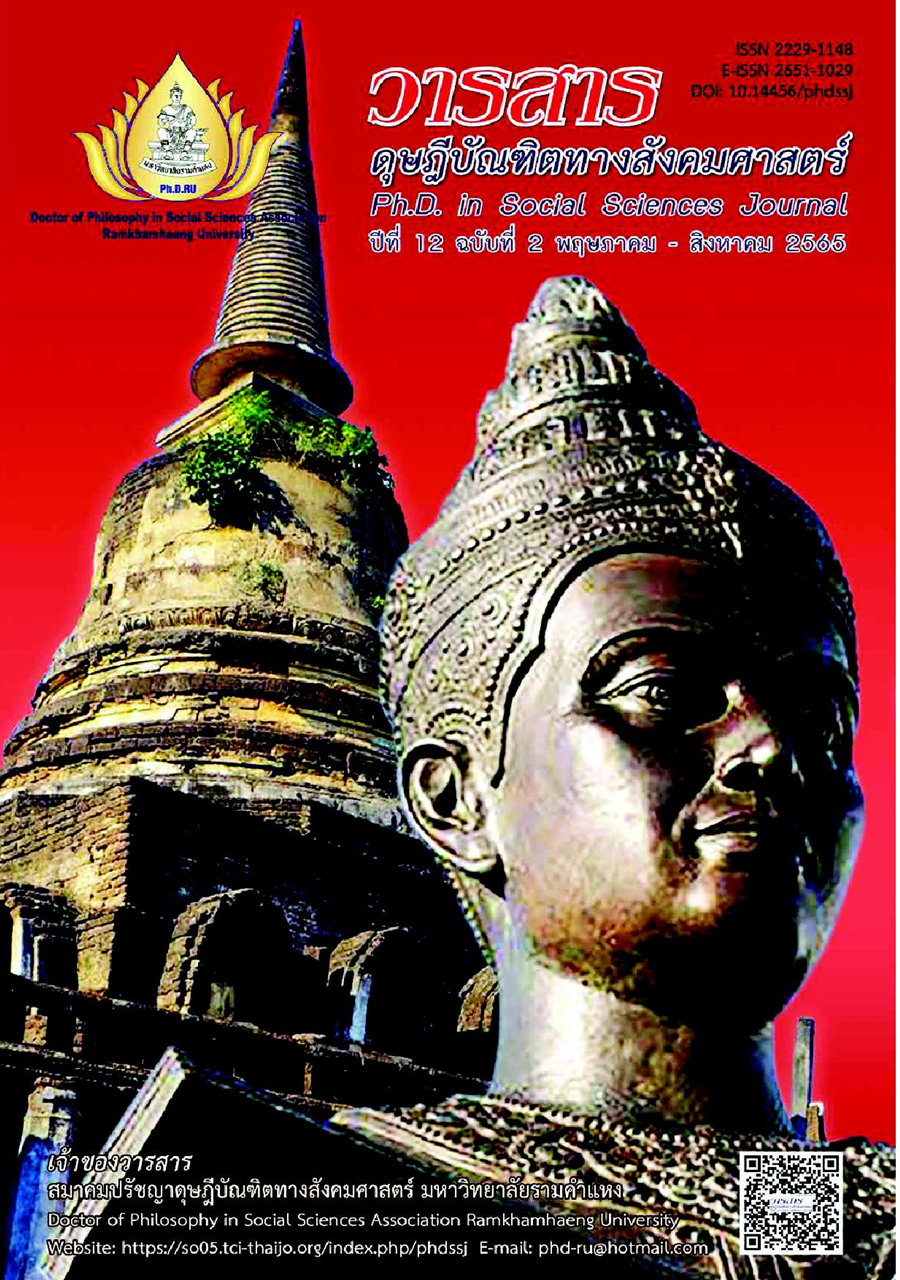Factors Influencing Rate of Return of Equity Funds and Exchange Traded Funds
Main Article Content
Abstract
This research article aimed (1) to study the factor influencing equity funds and exchange-traded funds (2) to evaluate the management efficiency of equity funds and exchange-traded funds, and (3) to compare management efficiency between equity funds and exchange-traded funds. Samples included 91 equity funds and 10 exchange-traded funds. This research employed secondary data. Data collecting was conducted during February 2013 - December 2017. Used statistics were descriptive statistics, Pearson’s Correlation, and Multiple regression. Additionally, management efficiency tools were the Sharpe ratio, Treynor ratio, and Jensen model.
Findings are as follows: that systematic risk impacted on rate of return of equity funds and exchange-traded funds at the .01 significance level. Regarding the evaluation of management efficiency of mutual funds and comparison study by Sharpe ratio found that exchange-traded funds provided more management efficiency than those equity funds. However, the Treynor ratio and Jensen model reflected that the management efficiency of equity funds is higher than those of exchange-traded funds. From the comparative study of management efficiency, regarding systematic risk, investors should invest in equity funds due to higher returns.
Article Details

This work is licensed under a Creative Commons Attribution-NonCommercial-NoDerivatives 4.0 International License.
Academic articles, research articles, and book reviews in the Ph.D. in Social Sciences Journal are author’s opinions, and not the publisher’s, and is not the responsibility of the Ph.D. in Social Sciences Journal Philosophy Association, Ramkhamhaeng University. (In the case that research is done on human, the researcher has to be trained in Ethics for Doing Research on Human Training and has to produce the evidence of the training).
References
Bank of Thailand. (2020). Thailand financial skills survey report 2020. Retrieved from https://www.1213.or.th/th/flsurveyreport/2563ThaiFLsurvey.pdf [In Thai]
Chaiphat, C. (2022). The role of debt in financial health of Thai households. University of the Thai Chamber of Commerce Journal, 42(1), 36-50. [In Thai]
Gordon, M. J. (1963). Optimal investment and financing policy. Journal of Finance, 18(2), 264-272.
Jensen, M. C. (1968). The performance of mutual funds in the period 1945-1964. Journal of Finance, 23(2), 389-416.
Kirativanich, T., & Chavakorn, P. (2013). Analytical focus on mutual funds (3rd ed). The Stock Exchange of Thailand. [In Thai]
Lintner, J. (1962). Dividends, earnings, leverage, stock prices and the supply of capital to corporations. The Review of Economics and Statistics, 44(3), 243-269.
Litzenberger, R. H., & Ramaswamy, K. (1979). The effect of personal taxes and dividends on capital asset prices: Theory and empirical evidence. Journal of Financial Economics, 7(2), 163-195.
Luangkaew, S., Chingchayanurak, C., & Thammajinda, R. (2019). Factors affecting index replication investment of index funds and Exchange Traded Fund (ETF) in the Stock Exchange of Thailand. Suthiparithat Journal, 33(108), 160-173. [In Thai]
Miller, M. H., & Modigliani, F. (1961). Dividend policy, growth, and the valuation of shares. The Journal of Business, 34(4), 411-433.
National Statistical Office Thailand. (2019). The survey of household socio-economic conditions, 2019. Retrieved from http://www.nso.go.th/sites/2014/DocLib13/ด้านสังคม/สาขารายได้/เศรษฐกิจสังคมครัวเรือน/62/Exclusive_62.pdf [In Thai]
Nuannuch, T., Ratchusanti, S., Chingchayanurak, C., & Tangsomchai, C. (2018). Relationship between dividend policy and stock price volatility in the stock exchange of Thailand. Kasalongkham Research Journal, Chiangrai Rajabhat University, 12(1), 65-79. [In Thai]
Panuvisitsang, W., & Chansarn, S. (2018). Factors influencing rate of return from common stocks of listed companies in food and beverage industry in the stock exchange of Thailand. Journal of Business Economics and Communications, 13(1), 137-148. [In Thai]
Sangkaew, J. (2004). Investment (6th ed.). Thammasat University Printing House. [In Thai]
Sanglai, N. (2016). The relationship between businesses life cycle and dividend payout of the registration company in the Stock Exchange of Thailand. Master Thesis of Business Administration, Burapha University. [In Thai]
Santaveesuk, K. (2019). All about investments: Investment principles. Thailand Securities Institute. [In Thai]
Sharpe, W. F. (1964). Capital asset prices: A theory of market equilibrium under conditions of risk. Journal of Finance, 19(3), 425-442.
Sitthigonsomanat, C. (2010). A study the factors affecting the rate of return adjusted by the risk value of the property fund (type 1 fund). Master Thesis of Science (Real Estate Business), Thammasat University. [In Thai]
Sitthiho, W. (2015). A comparative of return and risk between exchange traded fund and foreign investment feeder fund. Master Thesis of Science (Finance), Bangkok University. [In Thai]
Srisukho, A., Onsa-ard, C., & Suthichuen, K. (2017). Investor’s practice guide in mutual funds. Retrieved from https://e-ks.excise.go.th/book-detail/10#.YoB_U6hBy3A [In Thai]
Tangsatapornpong, M. (2010). Investment professional (1): Benefits of investing in mutual funds. Retrieved from https://www2.set.or.th/set/financialplanning/knowledgedetail.do?contentId=769 [In Thai]
Techamuanvivit, P. (2017). Fee is crucial before purchasing mutual fund. Retrieved from https://www.sec.or.th/TH/Template3/Articles/2560/ac-post-25600630-MF-fee.pdf [In Thai]
The Stock Exchange of Thailand. (2015). The exchange traded funds. Author. [In Thai]
Treynor, J. (1965). How to rate management of investment funds. Harvard Business Review, 43, 63-75.
Wongchaisuriya, S. (2021). Effects of characteristics of mutual funds and firms on fund performances in Thailand. In Proceeding of the 16th RSU National Graduate Research Conference (pp. 266-280). Bangkok: Rangsit University. [In Thai]


